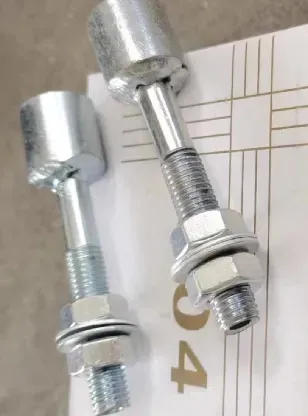loading...
- No. 9, Xingyuan South Street, Dongwaihuan Road, Zaoqiang County, Hengshui, Hebei, China
- admin@zjcomposites.com
- +86 15097380338
- Welcome to visit our website!
Structural Fiberglass Composites for Enhanced Durability and Performance in Construction Applications
Structural FRP Fiberglass Revolutionizing Modern Construction
In recent years, the construction industry has witnessed a significant transformation with the emergence of innovative materials, and one of the forefront solutions is Structural Fiber Reinforced Polymer (FRP) fiberglass. This composite material has garnered considerable attention due to its unique properties and applications, fundamentally changing how we approach strength, durability, and sustainability in structural engineering.
Structural FRP Fiberglass Revolutionizing Modern Construction
The durability of Structural FRP fiberglass is another significant advantage. This material does not rust or corrode, making it an ideal choice for applications in harsh environments, such as marine structures, wastewater treatment facilities, and bridges exposed to de-icing salts. The longevity of FRP fiberglass structures translates to lower maintenance costs and longer service life, ultimately enhancing the sustainability of construction projects. As the world grapples with environmental challenges, using materials like FRP fiberglass aligns with the growing emphasis on sustainable building practices.
structural frp fiberglass

In addition to its practical benefits, FRP fiberglass offers versatility in design. It can be molded into complex shapes and profiles, enabling architects and engineers to push the boundaries of creativity while maintaining structural integrity. Applications range from reinforcing existing structures to constructing new ones, such as beams, columns, and even entire facades. The design flexibility also allows for aesthetic integration, offering architects the freedom to create visually striking structures without compromising performance.
The use of Structural FRP fiberglass is not just limited to new constructions; it also plays a crucial role in rehabilitation projects. Many aging infrastructures require urgent upgrades to meet modern safety and performance standards. FRP fiberglass can be used to strengthen and repair existing concrete and steel structures, providing a lightweight and effective solution without extensive downtime or the need for heavy machinery. This aspect is particularly valuable for critical infrastructure, such as bridges and roadways, where quick restoration is necessary.
Despite the numerous benefits, the adoption of FRP fiberglass in the construction industry is not without challenges. The initial cost of materials can be higher than traditional options, which might deter some potential projects. However, as technology advances and production methods improve, the price is expected to become more competitive. Additionally, there is a growing need for industry standards and guidelines regarding FRP applications to ensure safety and reliability.
In conclusion, Structural FRP fiberglass is poised to play a crucial role in the future of construction. Its exceptional strength, light weight, durability, and design flexibility make it an ideal choice for a wide array of applications. As the industry continues to evolve and emphasize sustainability and resilience, FRP fiberglass promises to be a cornerstone material that meets the demands of modern construction while paving the way for innovative and environmentally responsible solutions. It is clear that the use of FRP fiberglass will not only redefine structural engineering but will also contribute to a more sustainable and efficient future.
-
The Rise of FRP Profiles: Strong, Lightweight, and Built to LastNewsJul.14,2025
-
SMC Panel Tanks: A Modern Water Storage Solution for All EnvironmentsNewsJul.14,2025
-
GRP Grating: A Modern Solution for Safe and Durable Access SystemsNewsJul.14,2025
-
Galvanized Steel Water Tanks: Durable, Reliable, and Ready for UseNewsJul.14,2025
-
FRP Mini Mesh Grating: The Safer, Smarter Flooring SolutionNewsJul.14,2025
-
Exploring FRP Vessels: Durable Solutions for Modern Fluid HandlingNewsJul.14,2025
-
GRP Structures: The Future of Lightweight, High-Performance EngineeringNewsJun.20,2025
